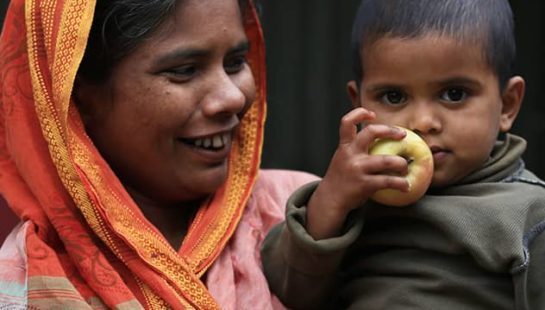First, The Bad News
I really don’t like being the bearer of bad news. Especially when it comes to the state of our world. Because, truthfully, our world has been kicking goals when it comes to ending poverty and achieving justice for the poor! Between 1990 and 2016, child mortality rates almost halved, and between 1990 and 2013, extreme poverty fell by almost 70%. Simultaneously, the world has seen enormous gains in education, disease management, access to clean water, and maternal health.
These are pieces of good news! Things to celebrate. Things to spur us on.
Unfortunately, its not good news on every front. And when it comes to ending child labour, I’ve got some pretty bad news.
The 2019 Child Labour Index has been released, and the findings are concerning…
“Progress on ending child labour is flatlining in the world’s manufacturing hubs. . . despite high levels of economic growth and improvements on poverty and education, progress on child labour has stalled in the manufacturing countries most entwined with global supply chains.
Child Labour Index 2019
No Tangible Improvement To Protect Children Since 2016
According to the latest annual Child Labour Index – which assesses 198 countries on the risks of child labour—manufacturing hubs like China, India, Bangladesh, Vietnam, and Cambodia have registered no tangible improvement on this issue since 2016.
This news should concern us. In a world that is making enormous strides towards ending poverty and exploitation, the pace is slowing when it comes to ending child labour—a practice that affects around 152 million children worldwide according to the International Labour Organisation. And as consumers, we can’t escape the fact that we are intimately connected to the problem through the products we buy.
Including our clothes.
The countries mentioned above produce the majority of the world’s clothing. China alone produces 36.4% of the global share of clothing exports, with India, Bangladesh, Vietnam, and Cambodia featuring in the world’s top eight exporters. From our research into the supply chains of Australian fashion brands, we know that these are also among the most popular sourcing countries for the Australian garment industry.
We also know that China and India are two of the world’s major cotton producers – a high risk industry for child labour. It is in these early (or raw materials) stages of the supply chain, which often sit outside the purview of companies, that the risks of child labour are both higher and least likely to be remediated.
We cannot escape the fact that in the countries that most of our clothing is coming from, child labour remains rampant.
I don’t like being the bearer of bad news. So fortunately, I have some good news as well. . .
Good News: Australian Fashion Brands Are Making Progress On Traceability
In the 2019 Ethical Fashion Report, we found that 48% of Australian fashion companies are working to trace where their raw materials come from, up from just 17% in 2013. And 81% of companies are working to trace where their fabrics come from, up from just 49% in 2013.
This is significant progress. And it is important. Because if companies don’t know where their clothing is being made, there is no way for them to know whether child or forced labour is occurring in their supply chain. An important step towards addressing child labour, is for companies to know which facilities are responsible for the production of their goods so that they can adequately monitor working conditions.
Good News: Australia Now Has A Modern Slavery Act
After years of advocacy from civil society groups, including Baptist World Aid and our coalition partner, Be Slavery Free (formerly Stop the Traffik), Australia now has a federal Modern Slavery Act. This is a welcome first step in addressing transparency and exploitation in corporate supply chains.
The Modern Slavery Act, which became effective on 1 January 2019, requires entities that are either based, or operating, in Australia, and have an annual consolidated revenue of more than $100 million, to report annually on the risks of modern slavery in their operations and supply chains. This includes reporting on the risks of the worst forms of child labour. This annual report, known as a ‘Modern Slavery Statement’, must list the actions a company has taken to assess and address those risks, as well as gauge the quality of the company’s response. This statement must be approved by the company’s Board of Directors, or an equivalent, and signed by a Company Director. Once submitted, this statement will be made publicly available on a central repository known as the ‘Modern Slavery Statements Register’.
The Act isn’t perfect. But it is has the potential to have an enormous impact on ending child and forced labour, as large companies are required to investigate the risks of exploitation throughout their supply chains.
Good News: You Have A Role To Play
You and I can play our part, as consumers, in ending child labour. You should continue to preference those companies doing the most to uphold the rights of workers in their supply chains and call on those that aren’t to do better.
Companies listen when consumers speak.
Time and time again, we hear of brands telling us that the reason they have made such significant strides towards ending child and forced labour in their supply chains is because of public pressure and consumer advocacy. So, let’s keep demanding to know where our clothes are being made; who they are being made by; and under what conditions those workers are labouring.
When it comes to progress on ending child labour—there’s bad news and good news.
My encouragement is for us to confront the bad and be part of ushering in the good.



 Baptist World Aid
Baptist World Aid

 Chantelle Mayo
Chantelle Mayo